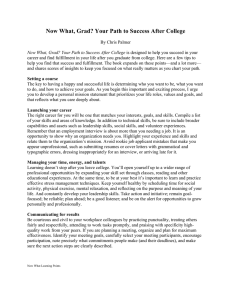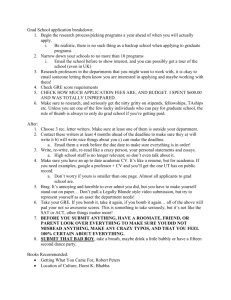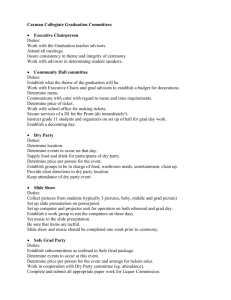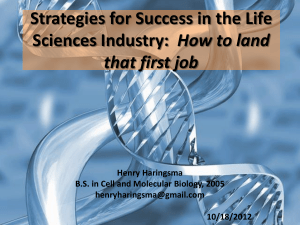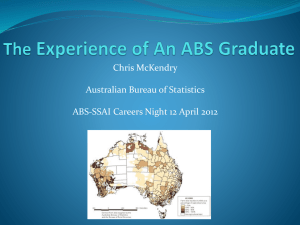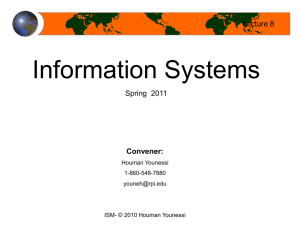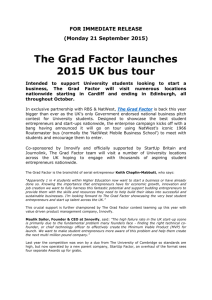Pathways for getting a faculty position
advertisement
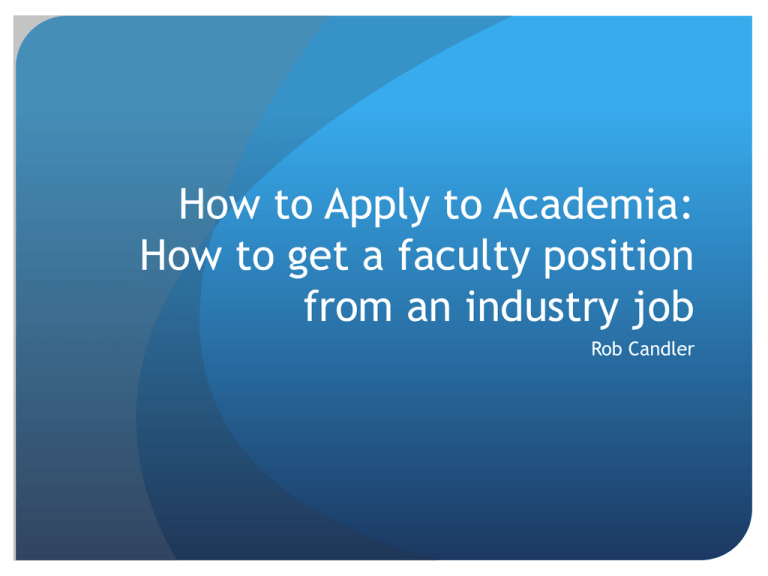
How to Apply to Academia: How to get a faculty position from an industry job Rob Candler Preparation My background Is academia what I want? In grad school After grad school Application My Background PhD in Electrical Engineering, Stanford University, 2005 3 years post-graduate “seasoning” Corporate research (Bosch Research and Technology Center) Consulting Assistant Professor UCLA Assistant Professor Is academia what I want? The Good Freedom Hours Research direction Working with students can be fun Teaching The Bad Long hours (we are selfmanaged and very demanding bosses) Pressure of funding Tenure process Teaching 25 years of school and they didn’t teach me how to do my job… Grad school training Researcher 25 years of school and they didn’t teach me how to do my job… Faculty job functions Therapist Teacher Finance Manager Researcher Salesman (Assuming you still want the job)What to do in grad school PUBLISH Journals – for archival record (varies by field) Conferences – for contacts Interdisciplinary work good – need to describe your contribution Apply for fellowships – a little prestige Do “faculty” things (to show you have the capability) Teaching experience Grant writing experience What to do after grad school Many schools want you to season a little bit (2-4 years) Old news for sciences Newer thing for engineering WARNING: If you’re out for more than ~5-6 years, you’ll be compared to tenured faculty for hiring (your peer group) Option 1: post-doc Option 2: corporate research Option 1: post-doc Traditional route Different university Definitely different adviser (some notable exceptions, especially if you are on the verge of a breakthrough) Stay visible (conferences, meetings) Look for track record of success from faculty Check for SPECIFIC cases Faculty without a track record is ok, too, as they will feel pressure to make you their success story, which is good. Faculty who have had many postdocs that don’t make it is not a good sign Option 2: Corporate research Pros A different experience/perspective A good paying job A good career start if the academic search doesn’t pan out Cons Difficulty in publication Loss of continuity in research People make false assumptions about your goals (e.g., “Why did you decide to quit industry and come back to academia”) Option 2: Corporate research Pure research lab is a thing of the past Can work well and get you industry experience and connections, but you have pick the job very carefully. You can ask “Do you allow publication?” Better than that, however, is to ask what publications have come out of their group in the past 5 years. Consulting/adjunct professorships are good Attend conferences, get on the review committees, if possible Getting the interview - the nuts and bolts of the process Find schools via Academic Keys, individual school websites, etc Applications due in December/January Interviews typically in March/April Getting the interview Primary Challenge: There are MANY qualified candidates, so you need to distinguish yourself Have an ADVOCATE!!!! (preferably senior member of the faculty familiar with your work) This emphasizes the importance of conferences At the interview Job talk 45-60 minute talk (work from your thesis and subsequent research with some high-level motivation) Level: Smart faculty that may not be experts in your exact area – include high level motivation Be clear about your contributions, especially for a project that was larger than you Future work: ~ 3 topics you want to work on in the future, showing some breadth/vision (i.e., not all continuation of your PhD) Major concern is whether faculty candidate can start and sustain successful research program Many, many 30 minute meetings with faculty members Be enthusiastic! Have a few summary slides to summarize your work Read their papers – primarily to find areas of possible collaboration Elevator pitch exercise Pair up 1 minute for each person to describe their research to the other person Now, tell the other person what you learned from their pitch. Specifically, High level impact State of the art How your work is an improvement over previous work (without trashing your colleagues) What long-term impact you think you could have If they are not clear on all of these, you should work on your pitch After you get the faculty position Come see me for the next round of advice (a much longer presentation) Thanks!
